About Repatriation & Why It's Important
Museums are bastions of culture, they hold artifacts from all over the world. These artifacts hold different meanings to different people and some want their artifacts repatriated. Restitution is defined by Merriam Webster as “the restoration of something to its rightful owner.” Many authors have explored the impacts restitution has had on art, museums, culture and the party making the return request. However, there is no universal approach. This framework is the main portion of the visualization and proposes four pillars: Symbolism, Legality, Morality, and Preservation. Then we will apply it to a sample of the MET's (Metropolitan Museum of Art in New York City) collection, as a test of reproducibility.
Lately, there's been a push to return artifacts that have been
taken through colonization. In November 2018, France announced
it would return thousands of artifacts taken during their
colonial period. Startlingly,
90% of Africa's heritage currently lies outside the
continent.
Note: Restitution and repatriation will be used
interchangeably throughout this visualization.
Click on to explore restitution cases worldwide.
Hover over the lines to see the artifact in question.
Artifact Movement Around The World
Case Studies: Mapping Global Restitution Cases
Repatriated Not Repatriated
Model Methodology:
This way to view the four pillars that make up the repatriation model.
|
Does the item represent a religious symbol?
Symbolic Value? Group Value? Importance to national or community pride? 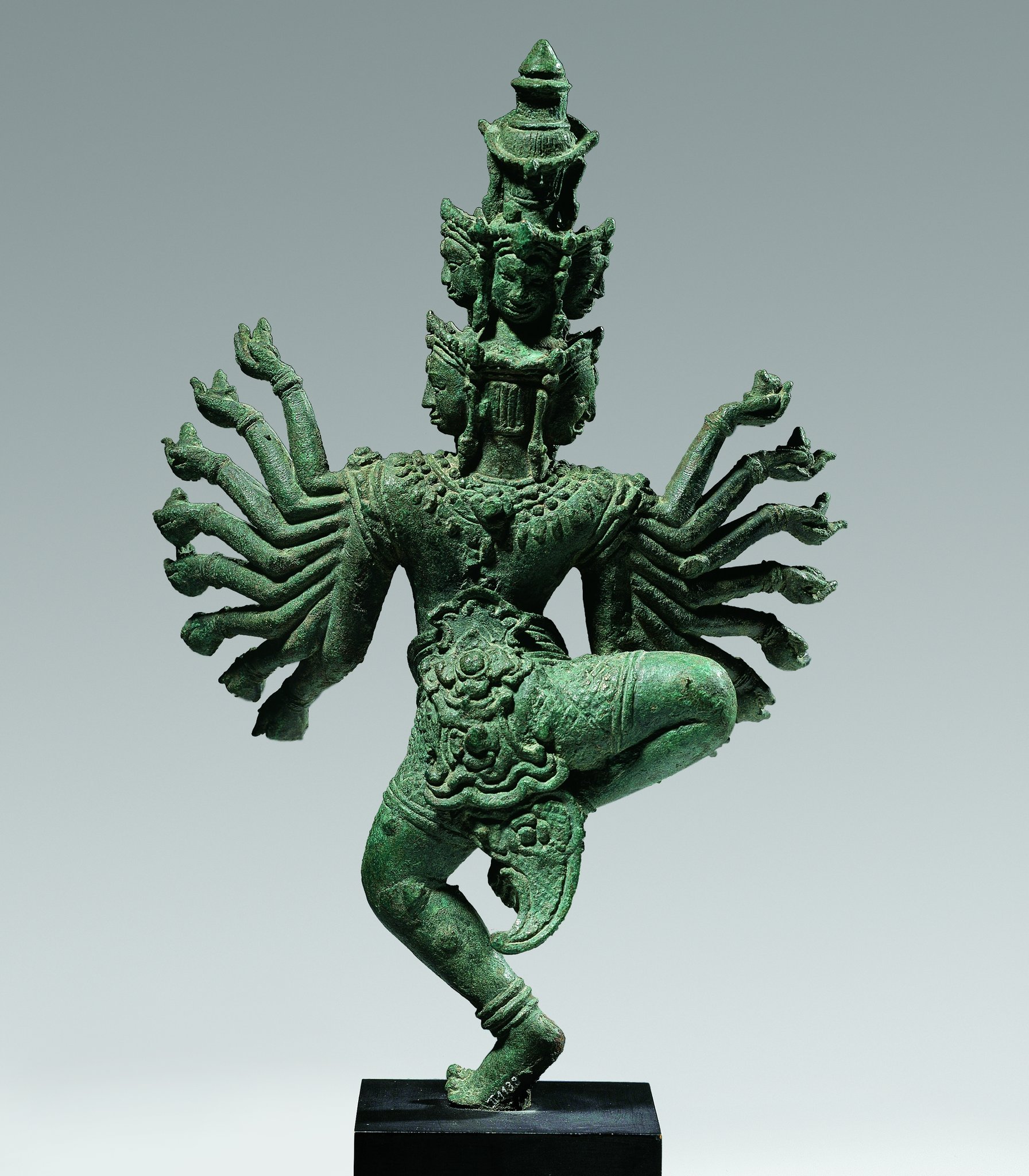
Symbolism |
Was the item taken in a consensual manner?
Was the art acquired during looting? Is the ownership the result of imperialism? 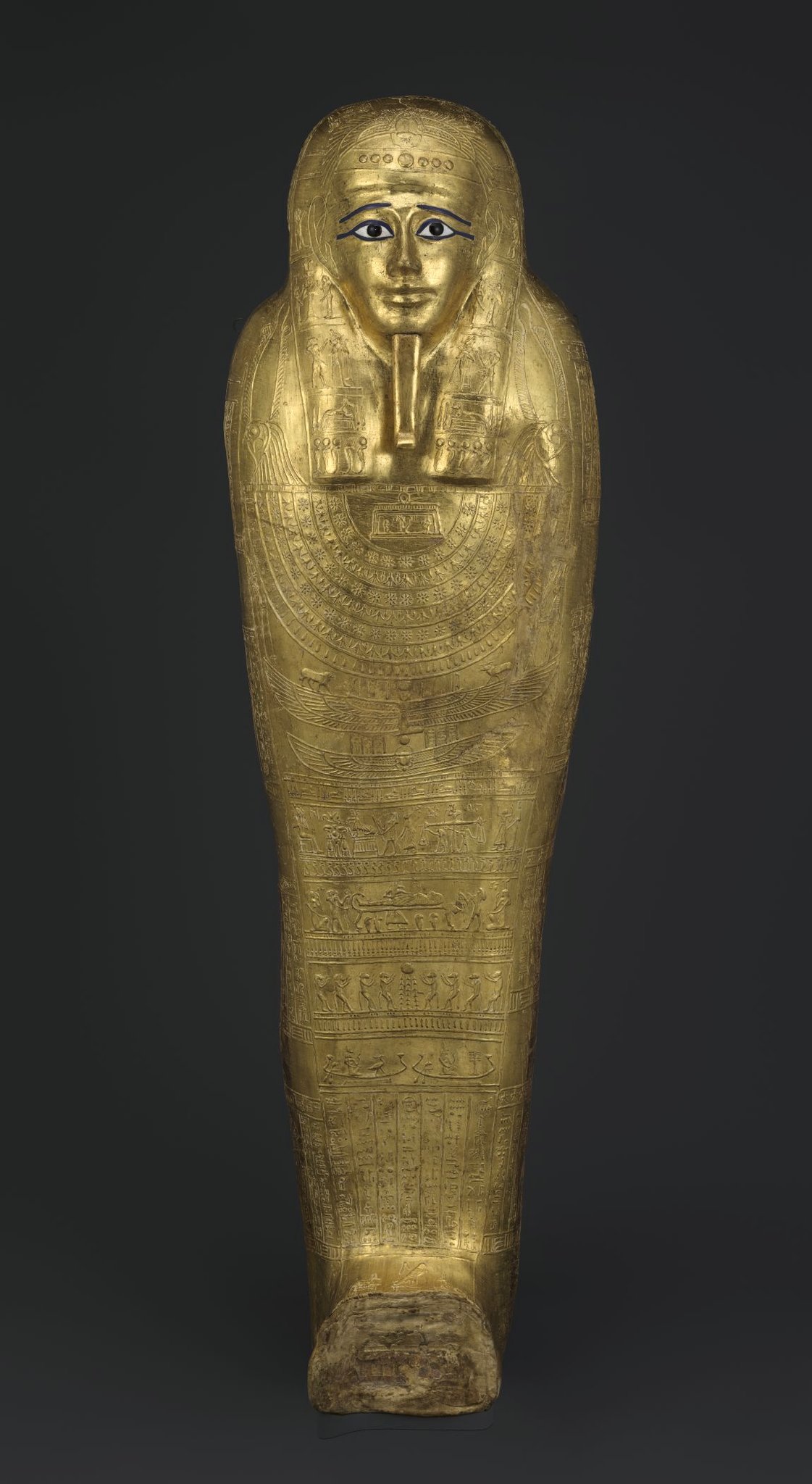
Legality |
Will the item be preserved?
Is the item reproducible? What is the Material Risk Assessment? What is the Conflict Zones Assessment? 
Preservation |
Is there a power imbalance between the requestor and the
requestee?
What's the argument from the court of public opinion? Part of the public's discussions? 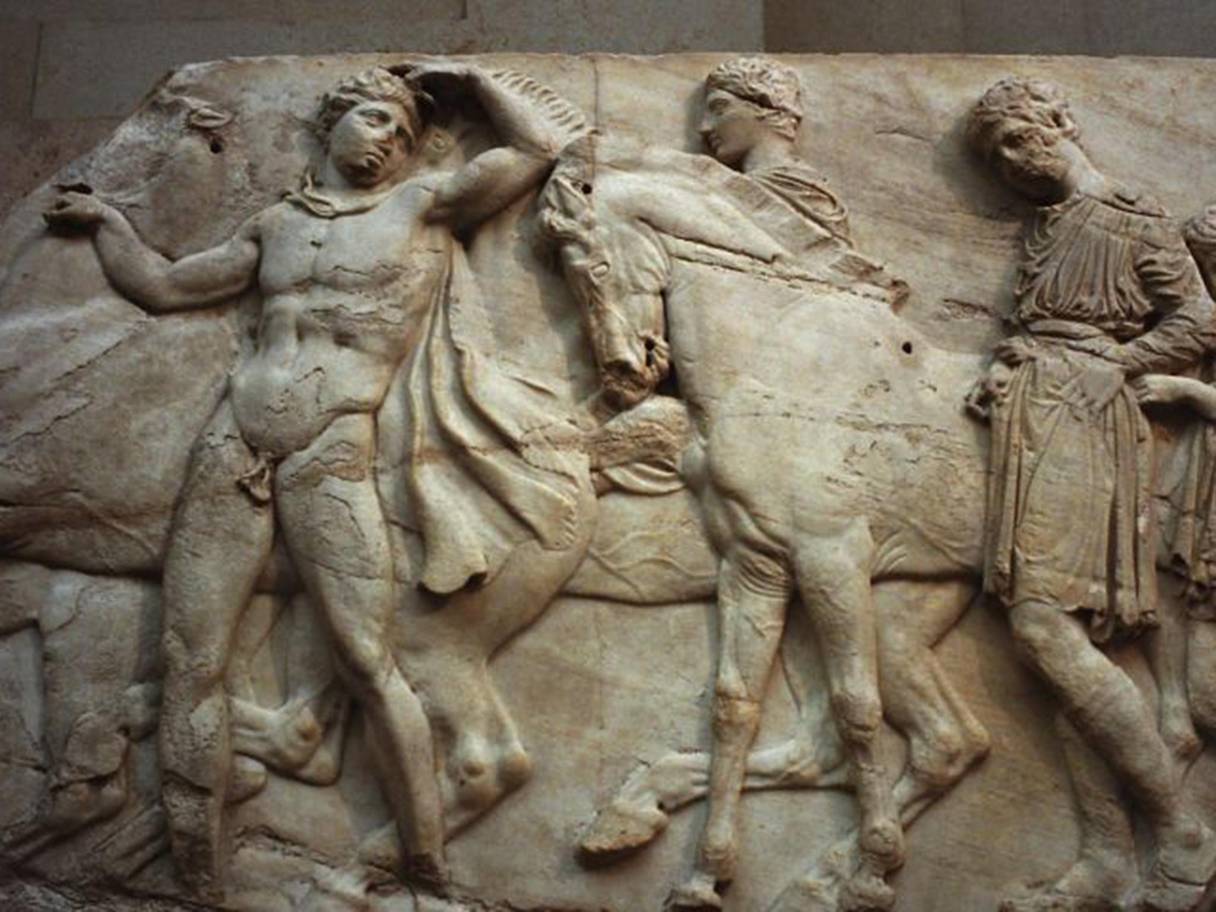
Morality |
What if we applied this model to a sample of 5000 items from the MET’s collection?
Hover over the images to see what questions were asked in order to build the model
Case Study: Applying The Repatriation Model to A Sample of 5000 Items from the MET's Collection
Hover over the circles to see information about that item
Case Study: Stone Male in Parka with Harpoon
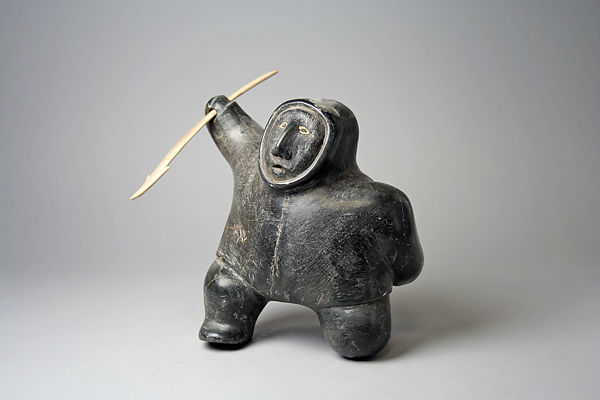
This artifact has a cumulative score of 15.
The repatriation model likely picked up on this item because
it meets the Preservation KPI's material assessment as a stone
sculpture and the geographical location of where this item was
made, Canada. The Inuit were historically marginalized so this
meets the Legality KPI.
The provenance of this item is not entirely clear. On the
MET's website it says: "Said to be from: Port Harrison
(Inukjuak) James A. Houston, New York, until 1969".
Case Study: Shaman's Mask
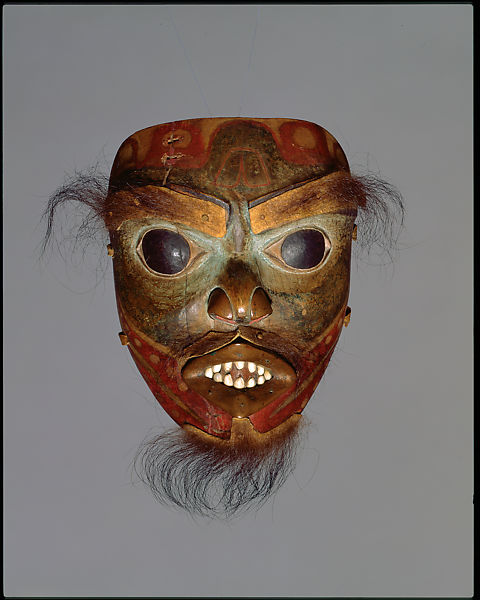
This artifact has a cumulative score of 10.
The repatriation model considered this item to be contentious.
Likely because it's an item from an Tlingit indigenous people
and for this symbolic meaning. The description on the MET's
site describes this item as: "This malevolent mask manifests a
powerful spirit being that helped a shaman mediate between the
worlds of matter and spirit".
Case Study: Medal of Captain Stephen Decatur, 1800–1830

This artifact has a cumulative score of 16.
The model picked up on a few American items, which makes sense
considering how the metrics were combined. Items in North
America scored higher. Not everything is required to be
repatriated if the item makes sense in its current location.
Data Methodology
How the metrics are measured:
Symbolism
For this model, the Symbolism metric was calculated by
binary scoring any object name within the "Object Column" in
the dataset that had any naming convention with a reference to funerary, marriage,
armour/war or ceremonial meaning as 1.
Legality
The legality metric was calculated by scoring any item
within the "Culture" columnin the dataset that had a culture
identified as "peoples" or a historically marginalized
community as 1, while the rest of the items were scored as 0.
Preservation
The preservation metric is a combination of two parts, the
materiality score and the risk assessment score. The
materiality portion was calculated by assessing the strength
of the material the artifact is made from. Materiality scale was measured as such: Clay = 1
Wood = 2 Ivory & Bone = 3 Stone = 4 Metals = 5. The logic behind this is the stronger
the material, the easier the artifact would be to return
without damage from transport or the elements.
The risk assessment score was calculated from the
Peace Index Scale, spcifically their regional scale from
most safe region to unsafest region. Regional scoring:
Europe = 1 North America = 2 Asia-Pacific = 3 South America
= 4 Central America & caribbean = 5 Sub-Saharan Africa = 6
Russia & Eurasia = 7 South Asia = 8 Middle East & North
Africa = 9
The safer the region, the less risk of damage to the
artifact in the midst of transportation and relocation.
Morality
Morality refers to the opinion of the general public on the
item in question by looking at Google Searches over a period
of time. This way we can assess if an item is top of mind
for the region and part of the overall public's discussions.
If the Google search shows a higher search rate (>1000),
then the item is given a score of 1, if not, it is scored as
0. However, in this particular model, the Morality metric
was not applied. This metric can always be applied if deemed
appropriate for the situation to provide further context.
Symbolism
For this model, the Symbolism metric was calculated by binary scoring any object name within the "Object Column" in the dataset that had any naming convention with a reference to funerary, marriage, armour/war or ceremonial meaning as 1.
Legality
The legality metric was calculated by scoring any item within the "Culture" columnin the dataset that had a culture identified as "peoples" or a historically marginalized community as 1, while the rest of the items were scored as 0.
Preservation
The preservation metric is a combination of two parts, the
materiality score and the risk assessment score. The
materiality portion was calculated by assessing the strength
of the material the artifact is made from. Materiality scale was measured as such: Clay = 1
Wood = 2 Ivory & Bone = 3 Stone = 4 Metals = 5. The logic behind this is the stronger
the material, the easier the artifact would be to return
without damage from transport or the elements.
The risk assessment score was calculated from the
Peace Index Scale, spcifically their regional scale from
most safe region to unsafest region. Regional scoring:
Europe = 1 North America = 2 Asia-Pacific = 3 South America
= 4 Central America & caribbean = 5 Sub-Saharan Africa = 6
Russia & Eurasia = 7 South Asia = 8 Middle East & North
Africa = 9
The safer the region, the less risk of damage to the
artifact in the midst of transportation and relocation.
Morality
Morality refers to the opinion of the general public on the item in question by looking at Google Searches over a period of time. This way we can assess if an item is top of mind for the region and part of the overall public's discussions. If the Google search shows a higher search rate (>1000), then the item is given a score of 1, if not, it is scored as 0. However, in this particular model, the Morality metric was not applied. This metric can always be applied if deemed appropriate for the situation to provide further context.
Conclusion
In the 18 and 19 centuries, increasingly unequal global power relations enabled European countries to accumulate huge numbers of cultural artifacts which found their way into their burgeoning museums. Ethnographic museums, in particular, have been the keepers of other people’s cultures, imposing their own classifications and interpretations onto objects from different peoples around the world: indigenous groups almost never had a voice. This model is intended to be a conversation starter. Ideally, becoming a neutral voice in the repatriation discussions. Museums are a reflection of society at large and should not hold objects that have a contentious nature as part of their provenance. Museums and Restitution: New Practices, New Approaches (pp. 2-3). Taylor and Francis. Kindle Edition. The model was a success in terms of its ability to bucket the samples into 4 distinct "shelves" and that it chose the appropriate items for those buckets. This framework is not intended to diminish past or present repatriation efforts. Museums are a reflection of society at large and provide a great service. As societies try to atone for past behaviours on marginalized communities, fairer museums are an important part of writing past wrongs.
Sources
- Agarwal, Mamta. "Process of Preservation of the Artifacts | Archaeological Findings." History Discussion. Source.
- Art and Sovereignty in Global Politics 2017. New York, NY Palgrave Macmillan.
- Exploring Machu Picchu a.
- Native American Repatriation and Nagpra b. Wordpress.
- Negotiating Culture Heritage, Ownership, and Intellectual Property 2013. Amherst : University of Massachusetts Press.
- "Return of African Artifacts Sets a Tricky Precedent for Europe’s Museums." c.The New York Times. Source.
- "U.N. General Assembly Resolution on the Restitution of Art to Countries Victims of Expropriation." 1974.International Legal Materials 13 (1): 243-244. doi:10.1017/S0020782900044971. Source.
- Aratani, Lauren. " FBI Finds 2,000 Human Bones at Indiana Home: 'Unlike Anything We’d Ever seen'." The Guardian. Source.
- Beisaw, April and Penelope Duus. 2016. "Repatriation as Inspiration: Multigenerational Perspectives on American Archaeology-Museum Relationships." Museum Worlds 4 (1): 95-110. doi:10.3167/armw.2016.040108.
- Charney, Noah. The Museum of Lost Art. First published ed.
- Cuno, James B. 2011. Who Owns Antiquity? Museums and the Battle Over our Ancient Heritage Princeton, N.J; Woodstock : Princeton University Press.
- DISPOSITION POLICY. Disposition Policy.
- Goodwin, Paige. 2008. "Mapping the Limits of Repatriable Cultural Heritage: A Case Study of Stolen Flemish Art in French Museums." University of Pennsylvania Law Review 157 (2): 673.
- Hartocollis, Anemona. 2019. "Who should Own Photos of Slaves? the Descendants, Not Harvard, a Lawsuit Says." The New York Times. Source.
- Institute for Economics & Peace. 2018. Global Peace Index 2018. Sydney.
- Kramer, Jennifer. 2006. Switchbacks : Art, Ownership, and Nuxalk National Identity Vancouver : UBC Press.
- McIntosh, Molly L. 2006. "Exploring Machu Picchu: An Analysis of the Legal and Ethical Issues Surrounding the Repatriation of Cultural Property." Duke Journal of Comparative & International Law 17 (1): 199.
- McManamon, Francis P. "The Native American Graves Protection and Repatriation Act (NAGPRA)." National Park Service., accessed March 4, 2019, Source.
- Merryman, John Henry. 1985. "Thinking about the Elgin Marbles." Michigan Law Review 83 (8): 1880. doi:10.2307/1288954.
- "The Metropolitan Museum of Art Collection API.", last modified Mar 28, Source.
- "Top 10 Museums and Galleries." National Geographic., last modified September 20, accessed March, 2019, Source.
- Salem, Aisha Y. 2005. "Finders Keepers-the Repatriation of Egyptian Art." J.Tech.L.& Pol'Y 10: 173.
- Steele IV, Chauncery D. 1999. "The Morgantina Treasure: Italy's Quest for Repatriation of Looted Artifacts." Suffolk Transnat'L L.Rev. 23: 667.
- Thompson, Erin L., author. 2016. Possession : The Curious History of Private Collectors from Antiquity to the Present New Haven : Yale University Press.
- Tythacott, Louise and Kostas Arvanitis. 2014. Museums and Restitution: New Practices, New Approaches Ashgate Publishing.
- Watkins, Joe. 2013. "THE POLITICS OF ARCHAEOLOGY; Heritage, Ownership, and Repatriation." In Negotiating Culture, edited by Laetitia La Follette, 15-37: University of Massachusetts Press.